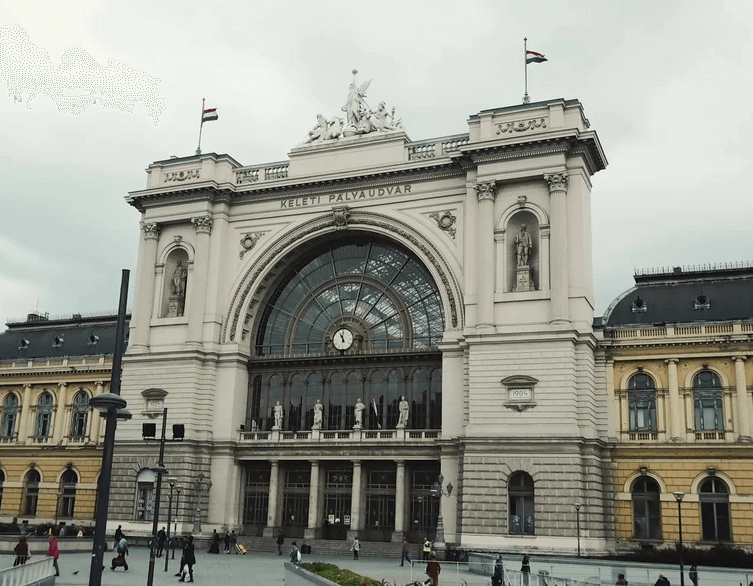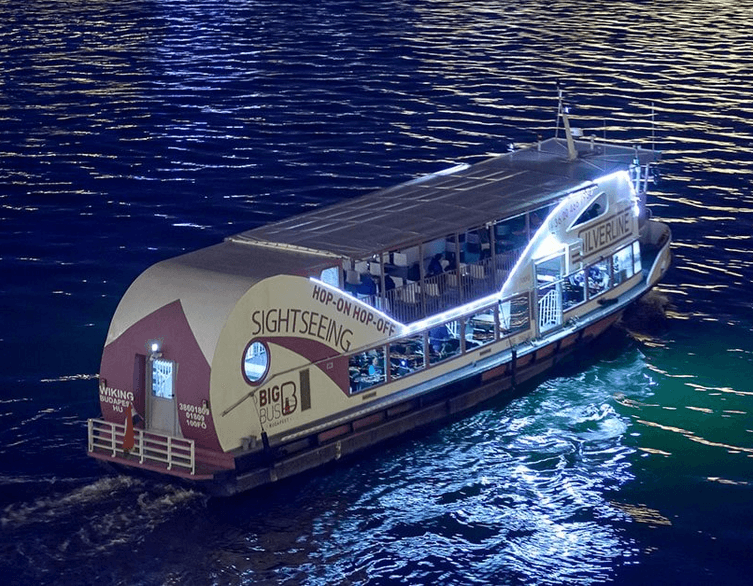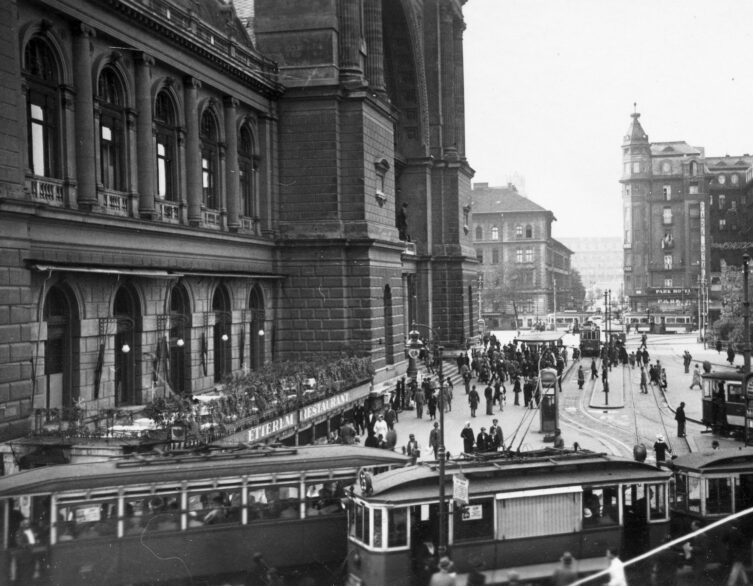Hidden Secrets Revealed: Budapest’s Keleti Railway Station Underground Mysteries During Major Renovation

If you’ve ever wondered what lies beneath one of Europe’s busiest railway stations, now’s your chance to peek behind the curtain. Budapest’s iconic Keleti Railway Station is currently undergoing a massive renovation that’s revealing secrets hidden for decades beneath the bustling terminal that serves millions of travelers each year.
The station has been completely closed to passenger traffic while Hungarian State Railways (MÁV) carries out the most comprehensive overhaul in the building’s 140-year history. But this isn’t just your typical infrastructure upgrade – construction crews and urban explorers have discovered a fascinating underground world that most visitors never knew existed.
The Venice Connection You Never Knew About
Before we dive into the mysterious underground discoveries, here’s something that’ll blow your mind about this architectural marvel. The entire Keleti Railway Station sits on more than 3,000 red pine posts, each stretching 15 meters deep into the ground. Think of it as Budapest’s own version of Venice – the surrounding area was originally marshland that couldn’t support the weight of such a massive structure without this ingenious foundation system.
The red pine doesn’t rot in wet conditions but actually becomes stone-like over time, creating an incredibly stable base that has supported countless travelers for well over a century. It’s one of those engineering marvels that makes you appreciate the ingenuity of 19th-century builders who solved complex problems with elegant solutions.
Cameras Capture the Forbidden Underground
During the renovation work, cameras have captured footage of areas that were previously off-limits to everyone except perhaps the most adventurous urban explorers. What they’ve revealed is absolutely fascinating for anyone interested in Budapest’s hidden history. Behind crumbling facades and locked doors, there’s an entire world of empty corridors, abandoned restaurants, and spaces that haven’t been used in decades.
The footage shows rusted iron gates, narrow passages filled with debris and old aluminum containers, and multiple levels of barricaded doorways that hint at something much more extensive lurking beneath the surface. There’s even evidence of an old freight elevator that once connected the main hall with lower levels, suggesting this underground network was once very much in active use.
Best deals of Budapest
The Double Basement Discovery
The most incredible revelation comes about 80% of the way through the exploration footage – the discovery of not one, but two complete underground levels beneath the station. This isn’t just a simple basement for storage. We’re talking about a massive, multi-story underground complex with walls several meters thick and passages secured with heavy metal grating.
While explorers haven’t been able to access the deepest levels due to security restrictions, the evidence suggests this underground system served purposes far beyond simple storage. The construction quality and security measures indicate this was likely designed as an air raid shelter during World War II, with some speculation that it may have had additional logistical and operational functions for railway management.
The Engineering Marvel Behind the Renovation
The current restoration involves replacing an absolutely staggering amount of infrastructure that most travelers never see or think about. We’re talking about 7,000 tons of crushed stone being replaced beneath the tracks alone. This isn’t just ordinary gravel either – this ballast stone provides both longitudinal and lateral stability for the railway tracks, preventing the concrete sleepers from shifting under the enormous weight and vibration of passing trains.
The specialized ballast screening machine working around the clock separates the deteriorated and muddy stones from material that can still be reused. It’s like performing surgery on the station’s foundation while keeping everything perfectly aligned for when service resumes. About 60% of the stone foundation needs complete replacement, which gives you an idea of just how intensively this railway hub has been used over the decades.
Budapest’s Secret Underground World
The Keleti Station’s hidden levels are just one example of Budapest’s incredible underground secrets. The city is absolutely riddled with subterranean mysteries that most residents, let alone tourists, never encounter during their daily routines. Take the Rákosi Bunker, for example – this massive complex extends 16 floors deep beneath Szabadság Square in the heart of the city center.
This Cold War-era bunker was designed as a luxury shelter for communist party elites, complete with living quarters and escape tunnels, though it was never fully completed. Today, only two mysterious manholes on the surface hint at the enormous complex hidden below. Urban legends swirl about secret tunnels and hidden telephone lines from the Cold War period, making it a holy grail for Budapest’s underground exploration community.
Medieval Walls in Plain Sight
Budapest’s historical secrets aren’t all buried underground either. Walk along the busy Múzeum Boulevard, and you’ll find remnants of the medieval city wall that once protected Pest from Mongol and Ottoman invasions. These fortress walls now stand casually among modern apartment buildings and bus stops, as if it’s perfectly normal to have medieval fortifications in your neighborhood.
You can easily spot these historical remnants by looking through the gateway of the building at number 33, where a substantial section of the wall remains visible. In the Bástya Street area, you can even see the original arrow slits that medieval defenders used to protect the city.
Round-the-Clock Precision Operations
The complexity of this renovation is absolutely mind-boggling when you consider the logistics involved. Between 200 and 400 specialists work around the clock, with detailed hourly schedules determining exactly which crew works where and when. Night shifts focus primarily on electrical work and overhead line maintenance, while daytime operations concentrate on track and platform restoration.
The precision required is incredible – you simply cannot have track repair crews working in the same location as electrical teams or ballast replacement operations. Every single hour of every day has been meticulously planned to ensure the September 20th reopening deadline is met without compromising safety or quality.
Components Dating Back to 1933
Some of the infrastructure being replaced during this renovation has been faithfully serving travelers since 1933 – nearly a century of continuous operation. The overhead electrical system alone spans almost 15 kilometers and includes components that have witnessed the entire tumultuous history of 20th and 21st century Hungary.
The station’s 50 railway switches are being systematically overhauled, with 30 already completed during the first two weeks of work. These switches had deteriorated to the point where speed restrictions of just 20 km/h were necessary in many areas. After renovation, trains will be able to navigate at 40-60 km/h throughout most of the station, with some approach sections allowing speeds up to 80 km/h.
What Tourists Can Expect After Reopening
When the station reopens in mid-September 2025, visitors will experience dramatically improved service reliability and frequency. The elimination of speed restrictions means trains can follow each other more closely without safety concerns, creating a more robust timetable that’s less susceptible to delays and disruptions.
The renovation includes completely rebuilding platforms 1 and 2, which contain more than 90 utility access chambers that require individual restoration and new surface materials. Even the classic station clocks that have been timing travelers’ journeys for decades are being replaced with modern equivalents that maintain the historical aesthetic.
A Window into Budapest’s Hidden History
For foreign tourists, this renovation represents a unique opportunity to understand how much hidden history lies beneath Budapest’s surface. The city’s layered past – from medieval fortifications to Cold War bunkers to 19th-century engineering marvels – creates a fascinating tapestry that’s often invisible to casual observation.
When you’re waiting for your train at the newly renovated Keleti Station, you’ll be standing above one of the most intriguing underground mysteries in Central Europe. Those massive red pine foundations beneath your feet have been supporting travelers since 1884, while somewhere far below, sealed chambers and forgotten corridors hold secrets that may never be fully revealed to the public.
The renovation work continues around the clock, with Hungarian materials being prioritized wherever possible, and Central European suppliers chosen when domestic options aren’t available. It’s a delicate balance between modernizing critical infrastructure and preserving the historical character that makes this station such an important landmark in Budapest’s urban landscape.
This glimpse into Keleti Station’s hidden world reminds us that Budapest is a city where every step you take is literally walking over layers of fascinating history, much of which remains tantalizingly out of reach beneath the bustling modern surface.
Related news



















